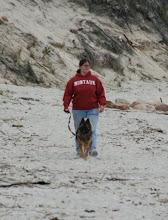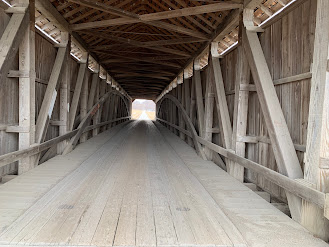The History of the Indiana State Sanatarium in Rockville Indiana.
Long before European settlers came to America the area now known as Rockville, Indiana was inhabited by the Piankeshaw Indian tribe a subgroup of the Miami Tribe. Once a thriving community by the 1800s their numbers were falling as hostilities between the Tribe and the new settlers as well as harsh winter followed by draught took its toll. In 1805 the Piankeshaw were forced to cede their properties in Indiana and move West to Missouri joining with other Native Tribes.
In 1821 Parke County was formed with the Wabash River serving as its western boundary. Three years later Rockville was laid out and the following year it became the county seat. In July of 1854 the citizens voted to incorporate the town.
Property records show that the land where the Indiana State Sanatarium would eventually be built was registered to Jonathan Garrison on March 12, 1831. It would then change hands multiple times. At some point there was a distillery on the property, the furnaces were found while building the administration building, however the name and owner of the distillery is unknown though it is believed to date to the 1830s.
What is known is that in 1907 Parke County began looking for a property to build a sanatarium due to the rising number of tuberculosis cases. They had a list of demands for the property ranging from access to railroads, height above sea level, and landscaping. This helped narrow the choices down to a few properties. On October 9th, 1907 the committee tasked with finding a suitable property came to visit Rockville. For its part the town and residents of Rockville did everything they could to show why they should be selected. They saw the addition of the Sanatarium to their community as a great opportunity to sell their farm fresh goods like eggs, milk, and meat. The building of such a large building would also provide a boost to the economy as jobs both in construction and eventually healthcare would become available. Their efforts paid off and the local paper on May 6, 1908 declared that the Little Raccoon site, named for the river that ran through it, was selected by the Hospital Commission and Governor.
Before construction could begin the property had to be purchased. The entire tract was divided between seven different land owners: Edgar Adams owned 130 acres, Gary Connelly owned 126 acres, John Adams owned 80 acres, Theodore Jessup owned 49 acres, William and Charles Bullion owned 44 acres, Claude Kent owned 41 acres, and James Myers owned 39 acres. Either the Bullions never wanted the Sanatarium or they soured on it after the fact but their property was eventually marked condemned as they would not agree to the proposed sale price. Finally in 1909 the first cornerstone of the multi-building facility was set and construction continued over the next two years.
On April 1st 1911 the Sanatarium opened as The Indiana State Tuberculosis Hospital and began receiving patients. At first the mortality rate was very high but within just a few years it lowered. For example in 1914 the annual report showed 53 deaths, in 1915 there were 24 deaths, in 1916 there were 30 deaths, and in 1917 there were 31 deaths. The staff worked to keep patients highly educated and involved about the disease and their treatment offering lectures 3 to 4 times a year about the disease, phases, symptoms, and treatments to help people understand and prepare for the duration of their stay. Some who recovered would help care for others. In fact the Sanatarium itself was self-sustaining with farmland, orchards, a hen house, and dairy to also help provide food for the residents.
In 1919 the name was changed to the Indiana State Sanatarium which would remain its name until 1968.
The property consisted of the Administration Building which had doctor's offices, exam rooms, the surgery, and all records. On either side of the Administration Building connected by an enclosed passageway was a tuberculosis ward, one for men and one for women. The wards consisted of long open hallways to allow fresh air and sunlight, two of the main treatments for tuberculosis at the time, to fill the patients' rooms. Originally each ward was built to house 140 each however that number increased and eventually they also had a waiting list of over 400.
 |
| Credit: Indiana State Historical Society |
In 1913 the State Sanatarium Bridge was added over the Little Raccoon creek to help aid in travel to the hospital. The bridge is a Kingpost Truss Burr Arch structure spanning 154 feet designed by Joseph A. Britton.
Unfortunately the tuberculosis wards no longer remain because they were removed and repurposed to build the nursing home. Only the tunnels below them used to access the steam pipes remain. Those steam pipes were heated by the coal burning power plant built on site to power the Sanatarium. As we drove around the area it was the smoke stack of the power plant that told us we were getting close, which makes me sad to know the stack is being removed due to structural issues.
As time passed more buildings were added including a children's ward and schoolhouse that at its height served 100 children.
 |
| Indiana Historical Society |
A five story building, Adams Hall, was also added in the 50s as staff housing and that building still remains having been repurposed over the years.
Around 1922 the Superintendent's Residence was added to the property. This two story structure had multiple entrances indicating that it may have been split between multiple families/staff.
In the late 1800s and early 1900s many large facilities like the Indiana State Sanatarium opened throughout the country. Tuberculosis was a rising disease that had a lot of fear surrounding it because little was understood about it and treatment was very limited. For the majority of patients that came to Rockville the main prescription was clean air, sanitary conditions, and good food. However there were other treatments that today seem cruel. For example in 1914 they injected nitrogen between the chest wall and lungs in order to collapse the lung and allow it to "rest" and slow the spread of tuberculosis. In five of those they also removed the ribs to help collapse the lung. According to the Superintendent W.A. Geckler "[n]o patients are subject to [surgery] who have any possible chance of recovery without it. Surgery in diseases of the lung is and must remain a last resort." For the doctors and staff at the time I imagine the balance between "do no harm" and also trying to save and preserve life weighed heavy on their minds.
With the development of streptomycin to treat tuberculosis in 1943 by Selman Waksman, Elizabeth Bugie, and Albert Schatz large Sanatariums like the one at Rockville began to empty. The property was taken over by a conglomerate and renamed Lee Alan Bryant Healthcare Center. The five story building originally used to house staff became Adams Hall, a mental institution. On the first and second floor coed patients were housed, the third floor was reserved for woman, the fourth floor for men, and the fifth floor supposedly housed more dangerous patients. Between Adams Hall and the original Administration building a single story cross shaped 120 bed nursing home was added.
Unfortunately as good as the Indiana State Sanatarium was at treating its patients Lee Alan Bryant was bad. There are allegations of abuse, suicides, escapes, and a murder suicide. There are reports of patients running away in the middle of the night and dying from exposure in the surrounding woods. There are stories of a woman who ran away and climbed to the top of the water tower. She was found frozen the next day. Some patients would be lost in the woods their remains found days or more later. Looking back now it looks like the whole situation was out of control for patients and staff. There are reports of attacks between patients and patients and staff. There was a murder suicide between two employees near the power plant with multiple stories about the dispute whether it was over a promotion, raise, drugs, or something else we are not sure. Throughout the building there are passive aggressive notes hanging on the walls warning staff and patients about acceptable and unacceptable behaviors. In 2012 after multiple complaints the state came to Lee Alan Bryant and shut it down. Patients were released or moved to other facilities. Staff were sent away.
Today nature has worked hard at reclaiming the buildings. Vines grow through the windows and birds nest in the vents. Suitcases, personal belongings, pay slips, and hospital equipment remain. Drywall has fallen down and paint peels from the walls.
Part 2 Coming Soon.











